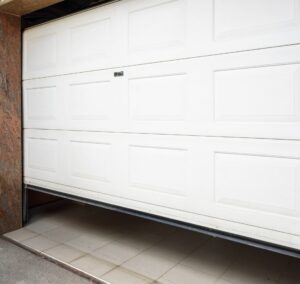A working garage door can mean the difference between getting to work on time and having to call in late to wait for help getting it open. After all, your garage door helps keep your vehicle protected when it isn’t in use. That’s why you want to ensure it is fully effective in fulfilling this purpose.
Balancing your garage door is the best way to ensure it remains in prime working condition. In fact, balancing your garage door is a routine you should be familiar with, so you can spot any problems before they worsen and nip them in the bud, saving you time and money on repairs. You will be able to go about balancing your garage door successfully by reading this guide.
What Makes A Garage Door Balanced?
First, you’re probably wondering what makes a garage door balanced. Put simply, a balanced garage door moves smoothly, thanks to the even distribution of the door’s weight. This weight is managed by the condition of garage door springs, which play a significant part in ensuring your garage door operates without a hitch.
Why Balancing Your Garage Door Is Crucial
Without balance, your garage door’s weight will be unevenly distributed. This imbalance can result in a garage door with clanky movement or one that suddenly slams shut or moves too quickly. Lack of control over the garage door’s movement can result in property damage and/or injuries. For the safety of yourself and others, you want to maintain the balance of your garage door.
A Guide To Balancing Your Garage Door
With your new foundation of garage door balance knowledge, you can start learning how to correctly go about balancing your garage door. While the process varies depending on whether your garage door uses torsion or extension springs, here are the most general steps:
1. Observe The Movement
First, you want to run your garage door and see if there are any signs of imbalance. If something seems off about the motions of the garage door, proceed to perform a balance check. This process will allow you to fully confirm whether or not you have a balanced garage door.

2. Switch Off Power
Balance checks are performed manually, so you want to turn off and disconnect your garage door opener from its power source. The last thing you want to do is hurt yourself by accidentally setting off an automatic feature on your opener while manually operating your garage door. As soon as this step is complete, you can move on to the next step.
3. Manually Check The Balance
Manually checking the balance of your garage door after disconnecting from power involves lowering it to the ground and noting the halfway point with a tape measure. After that, disengage the emergency release cord so you can raise your garage door to the halfway point. When letting go of the emergency release, the door should remain in the halfway position if it’s balanced. Then, you will use the cord to fully open the garage door and see if it remains open. If the garage door doesn’t stay in position, it is unbalanced.
4. If Unbalanced, Access And Adjust The Springs
You should consult a professional to balance your unbalanced garage door. That’s because garage door springs should only be handled by experienced technicians, as they are the least DIY-friendly part of your garage door. The technician will access and then adjust your springs accordingly, depending on whether they’re torsion or extension. They will proceed to test the door to see if it’s properly balanced.
Call Our Best Garage Door Repair Team For State-Of-The-Art Balance Services!
Knowing that your best course of action for balancing your garage door is to hire a professional, it’s time to pick the right company for the job. Luckily, Best Garage Door Repair can check your door’s balance as well as restore it. Contact us today to maintain your garage door’s functionality.

